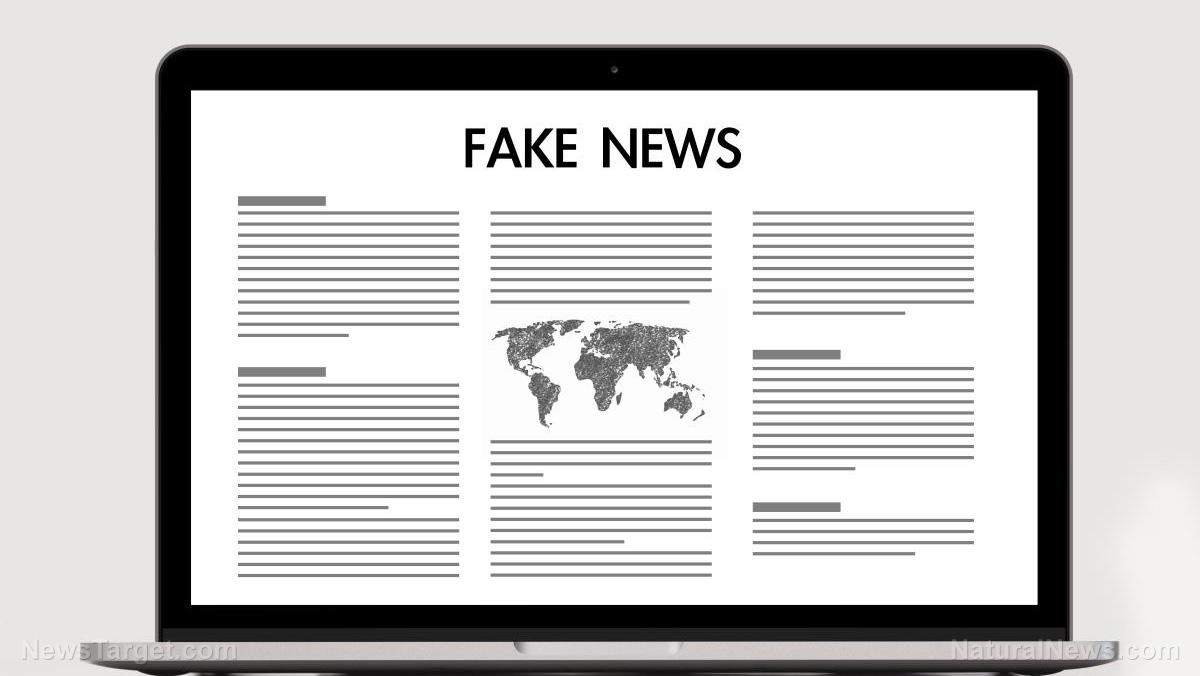The FBI’s forgotten criminal record
10/27/2017 / By News Editors

President Trump’s firing of FBI chief James Comey on May 9 spurred much of the media and many Democrats to rally around America’s most powerful domestic federal agency. But the FBI has a long record of both deceit and incompetence. Five years ago, Americans learned that the FBI was teaching its agents that “the FBI has the ability to bend or suspend the law to impinge on the freedom of others.” This has practically been the Bureau’s motif since its creation in 1908.
(Article by James Bovard republished from FFF.org)
The bureau was small potatoes until Woodrow Wilson dragged the United States into World War I. In one fell swoop, the number of dangerous Americans increased by perhaps twentyfold. The Espionage Act of 1917 made it easy to jail anyone who criticized the war or the government. In September 1918, the bureau, working with local police and private vigilantes, seized more than 50,000 suspected draft dodgers off the streets and out of the restaurants of New York, Newark, and Jersey City. The Justice Department was disgraced when the vast majority of young men who had been arrested turned out to be innocent.
In January 1920, J. Edgar Hoover — the 25-year-old chief of the bureau’s Radical Division — was the point man for the “Palmer Raids.” Nearly 10,000 suspected Reds and radicals were seized. The bureau carefully avoided keeping an accurate count of detainees (a similar pattern of negligence occurred with the roundups after the 9/11 attacks). Attorney General Mitchell Palmer sought to use the massive roundups to propel his presidential candidacy. The operation took a drubbing, however, after an insolent judge demanded that the Justice Department provide evidence for why people had been arrested. Federal judge George Anderson complained that the government had created a “spy system” that “destroys trust and confidence and propagates hate. A mob is a mob whether made up of government officials acting under instructions from the Department of Justice, or of criminals, loafers, and the vicious classes.”
After the debacle of the Palmer raids, the bureau devoted its attention to the nation’s real enemies: the U.S. Congress. The bureau targeted “senators whom the Attorney General saw as threats to America. The Bureau was breaking into their offices and homes, intercepting their mail, and tapping their telephones,” as Tim Weiner recounted in his 2012 book Enemies: The History of the FBI. The chairman of the Senate Foreign Relations Committee was illegally targeted because the bureau feared he might support diplomatic recognition of Soviet Russia.
Hoover, who ran the FBI from 1924 until his death in 1972, built a revered agency that utterly intimidated official Washington. The FBI tapped the home telephone of a Supreme Court clerk, and at least one Supreme Court Justice feared the FBI had bugged the conference room where justices privately discussed cases. In 1945, President Harry Truman wrote in his diary, “We want no Gestapo or Secret Police. FBI is tending in that direction…. This must stop.” But Truman did not have the gumption to pull in the reins.
The bureau’s power soared after Congress passed the Internal Security Act of 1950, authorizing massive crackdowns on suspected subversives. Hoover compiled a list of more than 20,000 “potentially or actually dangerous” Americans who could be seized and locked away at the president’s command. Hoover specified that “the hearing procedure [for detentions] will not be bound by the rules of evidence.” “Congress secretly financed the creation of six of these [detention] camps in the 1950s,” noted Weiner. (When rumors began circulating in the 1990s that the Federal Emergency Management Agency was building detention camps, government officials and much of the media scoffed that such a thing could never occur in this nation.)
From 1956 through 1971, the FBI’s COINTELPRO program conducted thousands of covert operations to incite street warfare between violent groups, to get people fired, to portray innocent people as government informants, and to cripple or destroy left-wing, black, communist, white racist, and anti-war organizations. FBI agents also busied themselves forging “poison pen” letters to wreck activists’ marriages. The FBI set up a Ghetto Informant Program that continued after COINTELPRO and that had 7,402 informants, including proprietors of candy stores and barbershops, as of September 1972. The informants served as “listening posts” “to identify extremists passing through or locating in the ghetto area, to identify purveyors of extremist literature,” and to keep an eye on “Afro-American type bookstores” (including obtaining the names of the bookstores’ “clientele”).
The FBI let no corner of American life escape its vigilance; it even worked to expose and discredit “communists who are secretly operating in legitimate organizations and employments, such as the Young Men’s Christian Association and Boy Scouts,” as a 1976 Senate report noted. The FBI took a shotgun approach to target and harass protesters partly because of its “belief that dissident speech and association should be prevented because they were incipient steps toward the possible ultimate commission of an act which might be criminal,” the Senate report observed. That report characterized COINTELPRO as “a secret war against those citizens [the FBI] considers threats to the established order.” COINTELPRO was exposed only after a handful of activists burglarized an FBI office in a Philadelphia suburb, seized FBI files, and leaked the damning documents to the media. The revelations were briefly shocking but faded into the Washington Memory Hole.
FBI haughtiness was showcased on national television on April 19, 1993, when its agents used 54-ton tanks to smash into the Branch Davidians’ sprawling, ramshackle home near Waco, Texas. The tanks intentionally collapsed 25 percent of the building on top of the huddled residents. After the FBI pumped the building full of CS gas (banned for use on enemy soldiers by a chemical-weapons treaty), a fire ignited that left 80 children, women, and men dead. The FBI swore it was not to blame for the conflagration. However, FBI agents had stopped firetrucks from a local fire department far from the burning building, claiming it was not safe to allow them any closer because the Davidians might shoot people dousing a fire that was killing them. Six years after the assault, news leaked that the FBI had fired incendiary tear-gas cartridges into the Davidians’ home prior to the fire’s erupting. Attorney General Janet Reno, furious over the FBI’s deceit on this key issue, sent U.S. marshals to raid FBI headquarters to search for more Waco evidence. From start to finish, the FBI brazenly lied about what it did at Waco — with one exception. On the day after the Waco fire, FBI on-scene commander Larry Potts explained the rationale for the FBI’s final assault: “These people had thumbed their nose at law enforcement.”
Read more at: FFF.org
Tagged Under: corruption, Cover-Up, criminal record, deception, deep state, enforcers, FBI, government, James Comey, lies, Police, politics, United States


















